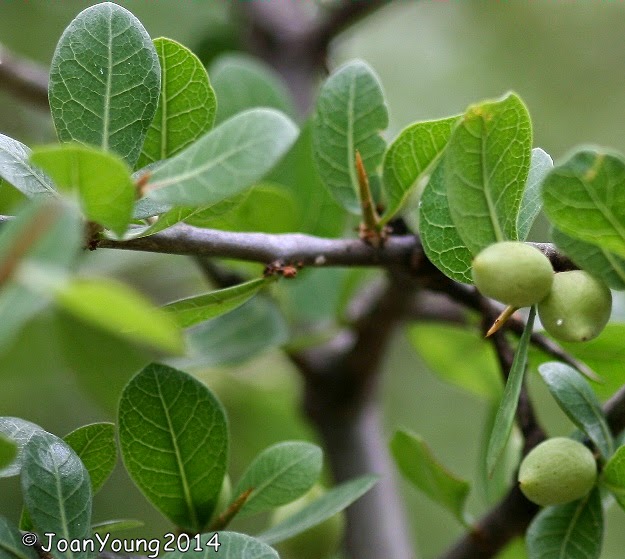Family Burseraceae
Corkwood trees are typical of arid and hot landscapes and fulfil an important
role in providing moisture and food in such inhospitable areas. The flowers are
pollinated by small insects and the fruit are eaten by birds and small mammals.
Many species of corkwood store water in the swollen lower part of their stems
and these are utilized by animals for the moisture. The leaves of some species
are browsed by game.
The gum-like resin has a strong taste, and is probably a deterrent to excessive damage.
Some Commiphora species are favoured by elephants and in some areas the trees are destroyed in great numbers. In the Mapungubwe National Park, in northern Limpopo Province, for example, the damage to these trees is severe. Often the very old trees are targeted and almost destroyed completely.
Corkwoods are multi-stemmed shrubs or trees with stems branching repeatedly at ground level, or trees with a single upright stem, often spiny, with smooth or papery bark. Species from arid areas often have a swollen, nearly succulent trunk. Branchlets are often spine-tipped. Leaves vary between simple and compound, 1- to 3-foliolate or pinnate. Small white inconspicuous flowers are produced in axillary panicles or on dwarf lateral shoots. The sexes are separate with different male and female trees. All parts of the flower are in fours. Round or ovoid fruits with thin flesh are produced. The fruits split into two sections when ripe, revealing the stone (seed) with a brightly coloured fleshy appendage (the pseudo-aril).
The corkwoods are a fascinating group of trees, because of their bizarre appearance, but more importantly for their historical and biblical association as providers of the earliest healing balms and fragrances.
The fact that many Commiphora species exude a resin with a pleasant odour and healing properties has been known since ancient times. Best known are the plants that produce myrrh and balm. Myrrh from Commiphora myrrha is mentioned in the Bible as one of the three gifts presented to the Christ child by the Wise Men. Commiphora gileadensis relates to the ‘Balm of Gilead', which was used for its fragrance as well as healing properties.
Info: http://www.plantzafrica.com







